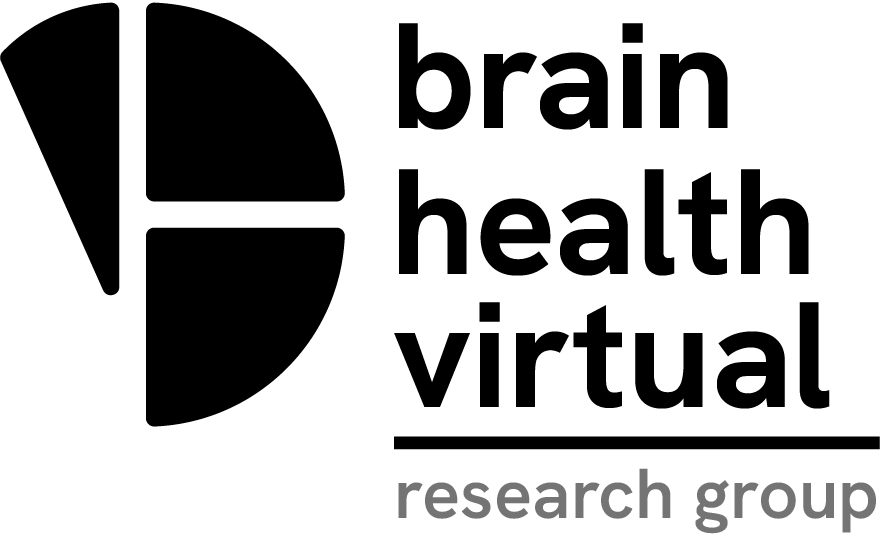The use of electroencephalograms (EEG) for conducting Brain Research is one of the most exciting research fields, gaining more and more attention. The potential to tap into the human’s brain and understand its secrets carries the promise of improving our lives in many different ways. With the aim to fulfill this promise, the BHV group has setup a lab with highly sophisticated equipment in order to perform research along two related fronts: brain computer interfaces for interaction, communication and neuro-feedback, and cognitive neuroscience focusing on cognitive decline.
Concerning Brain-Computer Interfaces, we follow a multidisciplinary approach (ranging from signal processing and analytics to machine/deep learning) that focuses on developing natural communication pathways between the brain and external devices or computer systems. The goal of our research is to create technologies that enable individuals to interact with computers, prosthetic devices, or other external equipment using only their brain activity, bypassing traditional input methods such as keyboards or touchscreens. To this end, our research revolves around both typical (event-related potentials, sensorimotor rhythms, etc) and novel paradigms (inner speech decoding) covering a wide spectrum of the corresponding research field. Moreover, part of our research is focused on the intersection of brain-computer interfaces with affective computing aiming to create technologies that not only understand users' cognitive intentions but also respond to their emotional states, enhancing user experience and engagement in diverse applications ranging from assistive technology to entertainment and beyond. In order to create more responsive human-computer interaction systems, we also combine EEG with a wide variety of physiological signals (such as eye-tracking and galvanic skin response) towards the development of reliable and robust multi-modal interfaces.
With respect to cognitive neuroscience, our primary objective is to investigate brain activation patterns in different experimental scenarios and participant cohorts in pursuit of uncovering innovative biomarkers. These biomarkers are posed to advance early detection methodologies, improve clinical assessment and enhance the development of personalized treatment programs. Our efforts are reinforced by an interdisciplinary team of researchers with complementary skills that has been studying the differences with regards to the cognitive function of healthy individuals, people with Subjective and Mild Cognitive Impairment, and people with Alzheimer Disease. Besides expanding the boundaries of cognitive neuroscience, we also aim to “translate” our findings into tangible advancements that improve the lives of individuals affected by cognitive disorders.
Projects
See allPublications
See allActive and assistive living relates to the enhancement of the quality of life of older adults based on the deployment of innovative ICT-based products, services and health-related frameworks at home, in the community, and at work. In BHV we conduct pioneer research in this area by delivering novel technologies for achieving early detection and providing adaptive and personalised interventions tailored for neurodegenerative disorders, based on the use of cost-effective solutions like wearables and smart home IoT sensors.
We particularly investigate behavioural patterns among older adults in real-life conditions and simulated home environments (e.g., during their visit in the smart home premises of our institute or at the participant's home through smart-watches) so as to capture different aspects of their performance, ranging from Activities of Daily Living (e.g., cooking a meal, washing the dishes) to physiological measurements and sleep. Our objective is to gain insights into the potential of technological solutions becoming an integral part of people's daily activity with the ultimate goal to capture subtle cognitive, behavioural or functional changes in the early stages of the disease and track cognitive dysfunction overtime via an unobtrusive and objective way.
Projects
See allPublications
See allXR technologies (Virtual, Augmented & Mixed Reality) are currently considered the technologies with the highest expected impact on user experience. Next to the low-cost and high-performance hardware for VR, AR and MR, we may add the 3D digitization and creation of objects and scenes that is becoming mainstream, as well as the ability to interlink physical with digital content leading to novel interaction paradigms and supporting the notion of spatial computing.
In BHV we are active in studying how novel paradigms of interaction that rely on virtual, augmented and mixed reality can be adopted for the benefit of both social (Culture and Education) and industrial (Architecture, Fashion) domains. In this regard, remote and on-site visitors of museums and cultural sites enjoy a drastically different experiece; classrooms are re-invented to offer more accessible and inclusive teaching, learing and assessment; architects can collaborate with fellow-engineers in a virtual enviroment with powerfull simulations; and fashion designers and consumers can capitalise on the benefits of virtual tryons.
Moreover, in the era of metaverses here at the BHV group, we aim to explore effective ways and methodologies to integrate and interact with heterogeneous representations and datasets to create meaningful virtual worlds across the spectrum of our daily lives. Our interdisciplinary research and creative team places special emphasis on multisensory, multimodal and multi-layered representation of information, aided by emerging technologies for improved accessibility and enhanced inclusion in immersive and photorealistic virtual worlds.

